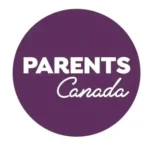Baby
4 min Read
Everything You Need To Know About Hand Foot And Mouth Disease

February 19, 2019
Baby
4 min Read

February 19, 2019

No matter where you live across the country, there are two things parents who have kids in daycare know for certain: pick-up time should always be held in high esteem, and unless wee ones don hazmat suits over their diapers, they’ll end up sick. Daycares are notorious for being germy cesspools where everything from snotty noses to pink eye to diarrhea thrives. Commiserate with any parent at pick-up or drop-off and you’ll hear endless tales of rashes, fevers and vomit-filled nights.
Honestly, consider yourself lucky if your biggest daycare health woe is a never-ending runny nose, because the one ailment you don’t want your tot contracting is hand, foot and mouth disease (or HFMD, affectionately known as “daycare disease”). Caused by the coxsackie virus, HFMD can affect kids at any age (and can even affect adults), though it’s most often found in the younger set. (Contrary to popular belief, it isn’t spread by animals.) It’s very contagious—especially during the first week of the illness—and is spread via saliva and stool, which is why it’s so rampant at daycares, where kids are constantly touching the same toys, surfaces, etc.
Unfortunately, it’s not super obvious right off the bat—according to the Canadian Paediatric Society (CPS), HFMD presents with symptoms synonymous with colds and flus, such as fever (usually low-grade), sore throat, loss of appetite, headache and lack of energy. The telltale sign—inevitable rashes, complete with tiny blisters—can take up to a week to appear on the palms of the hands, soles of the feet, bum and sometimes other body parts such as genitals and knees. (Kids might also get painful sores or ulcers in their mouths.) Health Canada says the disease is usually mild and recovery is expected within 10 days. (There can be complications, including meningitis, but this is extremely rare.)
That’s a big No. Kids are super contagious for the first few days (when they’re presenting with sore throat, fever and headache) so they should be kept home until they feel better. CPS says antibiotics don’t work (because it’s a virus) and there are no vaccines for HFMD, so parents should focus on giving acetaminophen or ibuprofen to help with pain and keeping kids comfy. Offering lots of fluids (try ice pops or ice—they also ease pain caused by mouth sores) is key, and leaving blisters to heal on their own (don’t pop!) is important. (Cold compresses can be helpful.) Once kids are feeling better they’re free to go back to daycare or school, even if remnants of the rash remain.
Steer clear if the virus hits and progresses typically—malaise, fever, rash. (You can confirm your suspicion of HFMD with your doctor or nurse practitioner.) Do visit your healthcare provider if your kiddo has a severe headache (paired with confusion, vomiting or more sleepiness than usual) or a severe sore throat, rapid breathing, vomiting a lot or showing signs of dehydration (less urine, refusing fluid because of sores in mouth, dry mouth, no tears when crying).
Handwashing with soap and water always reigns supreme—it’s the best way to prevent spreading and contracting infections. Health Canada advises washing for at least 20 seconds—this should be done often, and especially after changing diapers, using the bathroom, eating or prepping food and blowing your nose (or your child’s). Surfaces and toys should also be disinfected regularly.
Originally published in the Spring 2019 issue. Photo by iStockphoto.